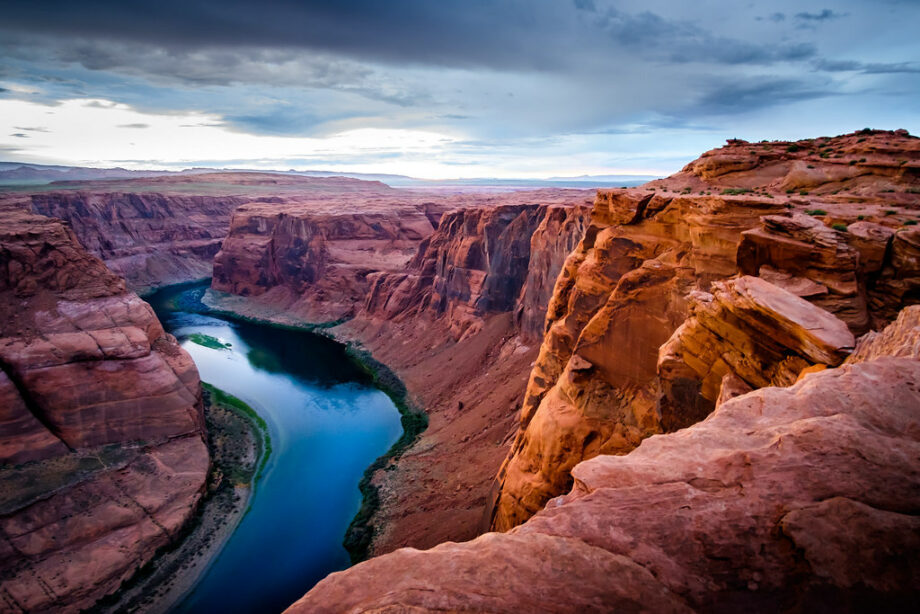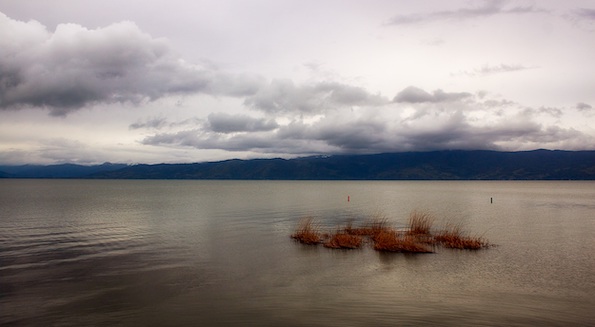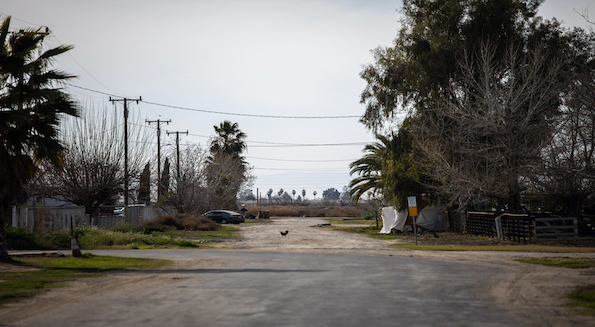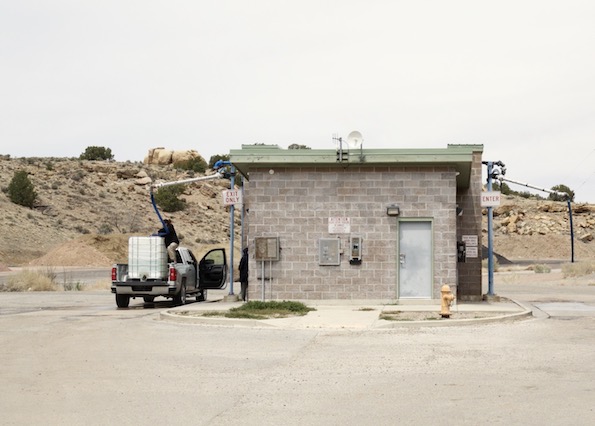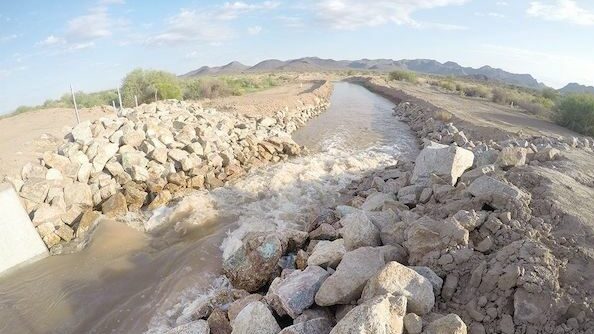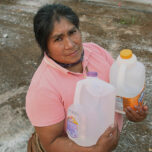May 14, 2021 —  Eight Institute for Nonprofit News newsrooms — California Health Report and High Country News; SJV Water and the Center for Collaborative Investigative Journalism; Circle of Blue; Columbia Insight; Ensia; and New Mexico In Depth — spent more than three months reporting on water issues in the Western U.S. The result — “Tapped Out: Power, justice and water in the West” — documents serious concerns including contamination, excessive groundwater pumping and environmental inequity — as well as solutions to the problems. It was made possible by a grant from The Water Desk, with support from Ensia and INN’s Amplify News Project. Click to read the stories below.
Eight Institute for Nonprofit News newsrooms — California Health Report and High Country News; SJV Water and the Center for Collaborative Investigative Journalism; Circle of Blue; Columbia Insight; Ensia; and New Mexico In Depth — spent more than three months reporting on water issues in the Western U.S. The result — “Tapped Out: Power, justice and water in the West” — documents serious concerns including contamination, excessive groundwater pumping and environmental inequity — as well as solutions to the problems. It was made possible by a grant from The Water Desk, with support from Ensia and INN’s Amplify News Project. Click to read the stories below.
California tribes call out degradation of Clear Lake
By Brett Walton, Circle of Blue
Seven years ago, after the fish died, Sarah Ryan decided she couldn’t wait any longer for help.
California at the time was in the depths of its worst drought in the last millennium and its ecosystems were gasping. For Ryan, the fish kill in Clear Lake, the state’s second largest and the centerpiece of Lake County, was the last straw.
Ryan is the environmental director for Big Valley Rancheria, a territory of the Big Valley Band of Pomo Indians that sits on the ancient lake’s western shore. She and others raised alarms for several years about increasingly dire blooms of toxic cyanobacteria. But Lake County officials and state agencies were not gathering the data on toxin levels that Ryan thought was necessary to adequately communicate the health risks to tribe members or to anyone else using Clear Lake to swim, fish, drink — or walk their dog.
Read more here >>
Some rural California residents doubt they’ll ever get clean water
By Claudia Boyd-Barrett, California Health Report and High Country News
When Ramona Hernandez turns on her kitchen faucet in El Adobe, an unincorporated town just a few miles southeast of Bakersfield, the water that splashes out looks clean and inviting. But she doesn’t dare drink it.
“You worry about your health,” she said in Spanish as she sat in her tranquil front yard one morning early this spring, her elderly mother-in-law working in the garden behind her.
“I’m scared,” Hernandez said, “of getting sick from the water.” Drinking the tap water in this tiny community of dusty ranches and unpaved roads could expose Hernandez to arsenic. So, for years, she and her husband, Gerardo, have shuttled twice a week to the nearby town of Lamont to load up on bottled water. At a cost of about $80 a month, it’s enough for drinking and cooking. If they had the money, Hernandez, 55, would buy bottled water to shower with and use for her chickens. But given her husband’s salary as a farmworker, she says, that’s not a realistic option.
Read more here >>
Toxic cyanobacteria choke water systems around California’s Clear Lake
By Brett Walton, Circle of Blue
On a good day, usually in late winter and early spring, the magnificent waters of Clear Lake seem to live up to their name. Under the shadow of the volcano Mount Konocti, the oldest lake in North America and second largest in California sparkles in an array of blues while fishing boats ply the shallow nearshore, their anglers hoping to hook a trophy bass.
From his office two miles inland, Frank Costner knows that the lake’s waters also shelter a treacherous occupant — potentially toxic blooms of cyanobacteria. As general manager of Konocti County Water District, Costner is responsible for supplying drinking water from Clear Lake to 4,500 people who live in this region a two-hour drive north of San Francisco.
Costner has worked at the district for 32 years and he knows when lake conditions deteriorate. Mats of cyanobacteria ring Clear Lake during warm months, covering its crystal waters along the shoreline with paint-like swirls of green and white. When the wind comes from the west, foul odors waft toward his office.
Read more here >>
Navajo-Gallup water delay spurs problem solving in arid Southwest
Early this year, five of Gallup, New Mexico’s 16 water wells stopped producing water, including two of its biggest. After a few days of maintenance, two worked. The other three were out of commission for more than a month. Had it happened in summer, the city might have asked residents to dramatically reduce use.
“I’m not in crisis mode,” said Dennis Romero, Water and Sanitation Director for the City of Gallup, but “it could go to crisis mode very quickly.”
The shortage isn’t wholly surprising — 20 years ago, the city decided it could limp along on aging groundwater wells with dropping water levels until a new water project began delivering San Juan River water in late 2024. The project is also connecting nearby Navajo communities, where many residents lack running water, an issue the Navajo Nation says is long past due and in need of a fix. But now a potential four-year delay could force a growing number of people to rely on these strained groundwater sources. A plan to keep taps from running dry will come with a price tag.
Read more here >>
Cheese in the desert: Why mega-dairies are piping water onto Oregon’s shrub-steppe
By Dawn Stover, Columbia Insight
Cody Easterday is still waiting for the Oregon Department of Agriculture to approve his application, submitted in June 2019, for a Confined Animal Feeding Operation near the city of Boardman (pop. 3,340), 165 miles east of Portland. Easterday, a 49-year-old rancher whose family owns a huge agricultural operation in Washington state, proposes to open a mega-dairy that would be the second-largest in Oregon. The Easterday Dairy would have up to 28,300 animals and use more water than most cities in the state.
The future of Easterday Dairy is in doubt, however. On March 31, Cody Easterday pleaded guilty to a “ghost cattle scam” that defrauded Tyson Foods and another company out of more than $244 million by charging for the purchase and feeding of animals that never existed.
The following day, a coalition of activists testified at an Oregon Senate Committee on Energy and Environment public hearing, voicing support for a moratorium on new or expanded mega-dairies in the state. Many of them pointed to the Easterday Dairy proposal, as well as an earlier dairy cited for hundreds of environmental violations at the same location, as reasons to hit the pause button on dairies housing 2,500 animals or more.
Read more here >>
“A generational historic struggle to regain our water”
By Sharon Udasin, Ensia
A riverbed that has been parched since the end of the 19th century — a portion of the historic lifeblood of the Gila River Indian Community — is now coursing again with water, luring things like cattails and birds back to its shores.
“You add water and stuff just immediately starts coming back naturally. Birds have returned and it’s just such a different experience,” says Jason Hauter, an attorney and a Community member. “It’s amazing how much has returned.”
The revival of this small segment of the 649-mile (1045-kilometer) Gila River, which has served the tribes that make up the Gila River Indian Community — the Akimel O’odham (Pima) and the Pee-Posh (Maricopa) — for roughly 2,000 years, was an added benefit of a grassroots infrastructure overhaul, known as “managed aquifer recharge,” or MAR, which aimed to restore the local groundwater basin. The MAR project has not only secured a water supply for local agriculture, but it has also generated a stable source of income and strengthened the Community’s ties to tradition.
Read more here >>
Related Posts
Ensia shares solutions-focused stories free of charge through our online magazine and partner media. That means audiences around the world have ready access to stories that can — and do — help them shape a better future. If you value our work, please show your support today.
Yes, I'll support Ensia!